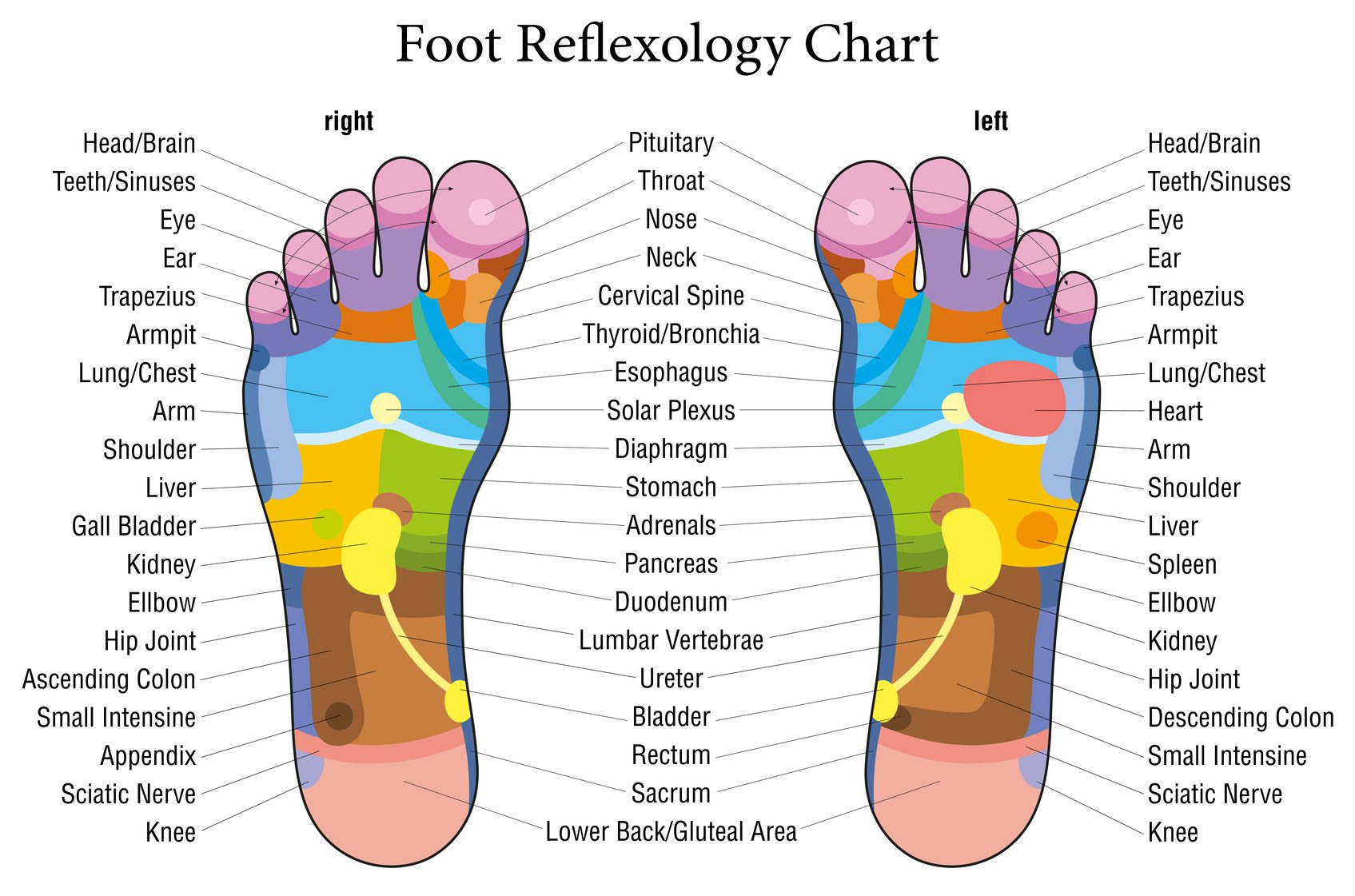Foot reflexology is a form of alternative medicine that applies pressure to specific points on the feet to stimulate the body’s natural healing processes. The practice has its roots in ancient Chinese and Egyptian medicine, dating back to as early as 2330 BC. The ancient Chinese believed that the body’s energy, or chi, flowed through channels or meridians that ran throughout the body, including the feet. The body’s energy could rebalance by stimulating these channels through pressure points on the feet. As a result, it would lead to improved health and well-being.
In the early 20th century, a physician named Dr. William Fitzgerald introduced the concept of zone therapy, which divided the body into ten zones that ran from the head to the toes. He believed applying pressure to specific points within these zones could relieve pain and promote healing.
Eunice Ingham, a physical therapist, further developed the practice of foot reflexology in the 1930s. She mapped out the reflex points on the feet and hands and developed a method of applying pressure to these points, stimulating the corresponding organs and systems of the body.
Since then, foot reflexology has gained popularity as a complementary and alternative medicine form and is now widely practiced worldwide.
While scientific evidence supporting its effectiveness is limited, anecdotal reports show that people continue to find relief from various health conditions through this practice. If you suffer from chronic ailments, it might be at least worth a try.
What Happens in Reflexology
Of course, your experience with reflexology will be different than someone else’s. Still, most people feel a sense of openness in their bodies and a tingling sensation throughout as the energy flows. Reflexology should not cause tension in your body. Instead, you should be headed towards a more relaxed state of being.
You might also feel:
Perspiration of hands or feet
The sensation of being cold or chilled
The need for deep breaths
A yearning to sleep
The relief of most, if not all, pain and discomfort
Loose, relaxed muscles
Feeling like your organs are free, without stress and tension
Reflexology is available through a therapist trained in ancient art. It can also be done at home with a partner, or you can perform it on yourself.
Before beginning, your first step is to consult a foot chart and map your ailment to the appropriate spot on your foot or feet. Then, use your thumb and fingers to massage, slowly and deeply while kneading the pressure point. Continue to massage the specific point for 10 minutes before finishing with an overall foot massage. End each reflexology session with deep, mindful breaths to solidify the energy flow.
How to Use a Reflexology Foot Chart
When you first look at a reflexology foot chart, it can be confusing and overwhelming. Don’t let that scare you off. Make time to study it and become used to reading it. You can take as much time as you need to plan your course of treatment because there is nothing time-sensitive about performing reflexology other than relieving your pain.
You can perform a session that treats your entire body or get specific in terms of one condition. As mentioned, every organ, gland, and body part are mapped to a point on either the right or left foot. If you know what organs are associated with your ailment, locate that area on the foot chart.
There is no right or wrong foot to start with, and many reflexologists work on one specific area on one foot and alternate to the other, then move to the next area and alternate again. When all else fails, and you aren’t sure what to do, start massaging at your toes and slowly moving down to your foot’s heel. As you do, pay attention to the points on the chart and observe how your body responds.
You can see from the foot reflexology chart that some areas are mapped to the top of the feet, including the mouth and teeth, the chest, and the lymph nodes.
Here are some common ailments and their touch points using reflexology
What ailments do reflexology healers heal with their practice? Here are a few:
Relieve Headaches
Headaches are often caused by tension in the neck, so begin by massaging the big toes to relax your neck a bit. Then focus on applying more pressure on the upper halves of each toe to pinpoint the nerves connecting to the head.
Sleep Disorders
To help with restless nights, target the pituitary gland by applying pressure to the bottom side of the middle of your big toe.
Colds and the Flu
You will target the areas corresponding to your sinuses, nose, throat, eyes, and lungs for colds and the flu. Pay attention to the side of your big toe and the middle of each toe. Finally, focus approximately an inch below your toes.
Digestion
Many organs are involved in the digestive process, mostly found on the bottom of the foot toward the bottom.
Asthma and Bronchitis
The lungs are the obvious target for helping with breathing. They are mapped to the middle of the foot, about an inch below your toes and the middle part of the top of your foot.
Back Pain
The back is connected to the upper and lower body and can be targeted by massaging each foot’s bottom half.
It’s important to remember that Reflexology is not an immediate cure, and the best results come from consistently targeting specific areas. It is not a magic remedy but over time, you will notice improvements in your specific problem areas.
Final Thoughts on Foot Reflexology
Foot reflexology is an ancient practice that can promote healing and balance in the body. While scientific evidence supporting its effectiveness is limited, many people have reported positive results from this form of alternative medicine.
However, it is vital to note that foot reflexology should be used in conjunction with medical treatment under the guidance of a physician. While it can complement traditional medicine, it should not be used as a substitute for medical care. Therefore, individuals considering foot reflexology should consult their doctor to ensure it is safe and appropriate for their health needs.
Reflexology is not a diagnosing tool but a supplement to standard treatments for most ailments. It is not advised that you pursue a course of treatment using Reflexology without consulting your doctor.



















